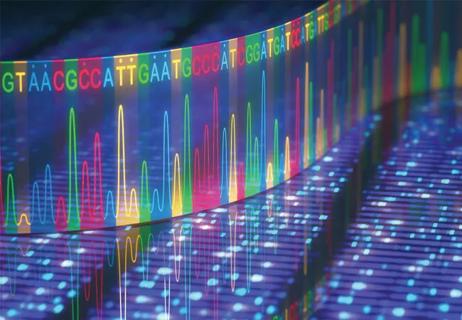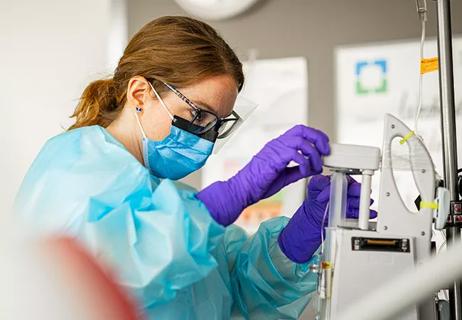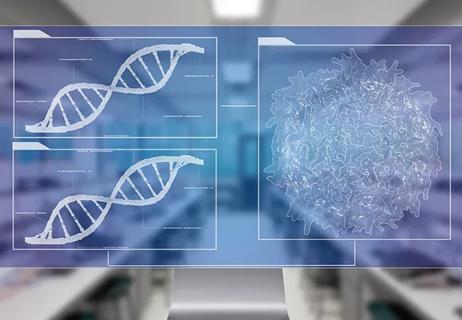An expert offers her take

Caroline Astbury, PhD, FACMG, joined the Robert J. Tomsich Pathology and Laboratory Medicine Institute in May 2017 as the Director of Cytogenomics. We asked Dr. Astbury few questions about the exciting and ever-changing field of cytogenomics.
Advertisement
Cleveland Clinic is a non-profit academic medical center. Advertising on our site helps support our mission. We do not endorse non-Cleveland Clinic products or services. Policy
I became interested in cytogenetics while working on my PhD. My thesis advisor was the principal investigator on several research projects (including investigating mosaic Down syndrome and the tumorigenic vs metastatic drivers behind prostate cancer) and also the Director of the Clinical Cytogenetics laboratory, responsible for signing out karyotypes and fluorescence in situ hybridization (FISH) assays.
I had never been exposed to chromosome analysis before working in her lab and was fascinated with the skill it takes to analyze normal and abnormal chromosomes band for band, and to apply those findings both diagnostically and prognostically.
Traditional cytogenetics is centered on G-banded karyotype analysis, which was (and is) the first, broad genomic test available to clinicians. Karyotype analysis is capable of detecting aneuploidies, deletions, duplications, translocations and inversions, which may be associated with cancer, pregnancy loss, infertility and various congenital disorders. The basis of this technique involves culturing many different tissue types so that metaphase chromosomes can be interrogated.
While chromosome analysis offers a high-level genomic interpretation, FISH, also known as molecular cytogenetics, utilizes fluorescently-labelled DNA probes to interrogate specific, submicroscopic regions or genes of interest in both constitutional and somatic analyses. FISH probes have been designed to detect clinically relevant submicroscopic microdeletions and microduplications (for example Williams syndrome, 22q11.2 microdeletion/duplication syndrome and Prader-Willi syndrome), as well as the nonrandom, chromosomal translocations that are associated with specific cancers or tumors. FISH may be performed on both metaphase chromosomes as well as interphase nuclei from cultured cells, fresh tissue or archival, paraffin-embedded samples.
Advertisement
The most recent addition to the cytogenetic toolbox is microarrays, which is essentially a DNA-based assay. Microarrays utilize oligonucleotides to investigate copy number alterations and single nucleotide polymorphisms (SNPs) to investigate genotypes. Copy number alterations may include whole chromosomes or regions measured in kilobases that are below the limit of resolution of chromosomes or FISH. SNP analysis is used to investigate regions of homozygosity within a chromosome or across the genome that may be indicative of uniparental disomy (the inheritance of two copies of one chromosome from the same parent), which becomes clinically relevant if it involves a chromosome subject to imprinting or if it unmasks a recessive disorder. SNP analysis is also helpful in determining the degree of relatedness between a patient’s parents; the more closely the parents are related, the higher the risk for inheriting a recessive disorder. All of these techniques together comprise cytogenomics.
The advent of next-generation sequencing (NGS) into the clinical arena has allowed my field to expand tremendously with whole genome analysis at the nucleotide level. This has dramatically improved the ability to end the diagnostic odysseys of some individuals with rare disorders or to tailor treatment options to a specific cancer. Noninvasive prenatal screening has revolutionized the prenatal testing arena, with the ability to detect cell-free fetal DNA in maternal blood and to screen for the common chromosome aneuploidies, such as Down syndrome/trisomy 21. However, confirmation of a positive screening result still relies on cytogenomic techniques for diagnosis. Karyotyping and FISH analysis are the quickest and cheapest ways to diagnose these aneuploidies.
Advertisement
The aim of a clinical laboratory is to use all of the tools in its toolbox to provide a patient and physician with as much information as possible and as quickly as possible in order to guide diagnosis, treatment, or reproductive options. It is tremendously exciting to be part of a field that is continually evolving and adapting to new methodologies.
Advertisement
Advertisement

Study identifies Ketorolac as a potential repurposable drug

The relationship between MTHFR variants and thrombosis risk is a complex issue, but current evidence points to no association between the most common variants and an elevated risk

One-time infusion of adenovirus-based therapy is designed to restore heart muscle function

Cleveland Clinic researchers receive $2 million grant from the National Institutes of Health

New Cleveland Clinic fellowship fosters expertise in the genetics of epilepsy

Integrates genetic and clinical data to distinguish from GEFS+ and milder epilepsies

First-of-kind study aims to enable prevention of brain disorders before symptoms appear

Advanced genomic research techniques show potential to treat a variety of conditions